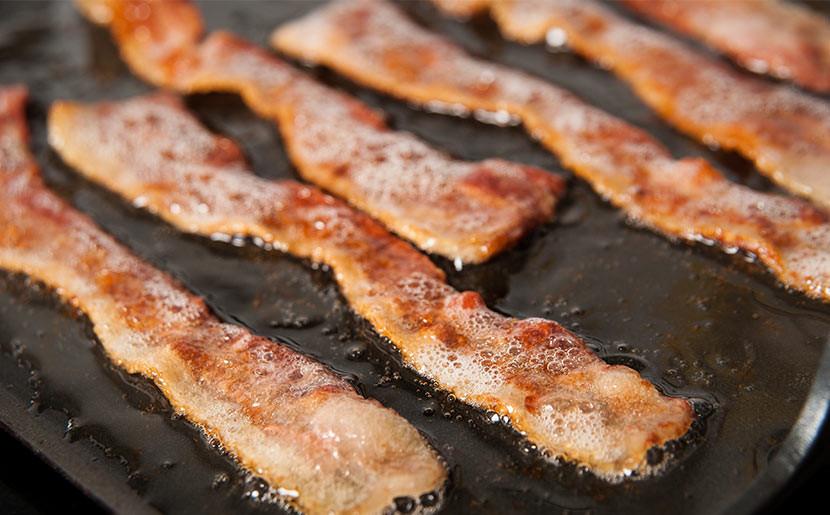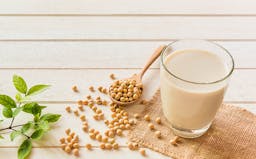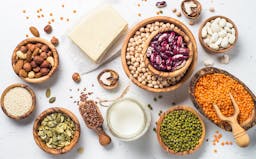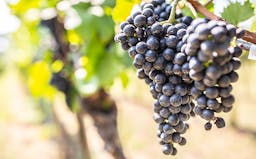Can Christians Eat Pork?
Article by:
Amazing Discoveries™ |
15 min read
Jews and Muslims don’t eat pork, but what about Christians? Does the Bible say not to eat pork? In Leviticus 11:7 we’re told that pork is an unclean food. God also told His people, “Their flesh you shall not eat, and their carcasses you shall not touch. They are unclean to you” (Leviticus 11:8 NKJV). “Therefore, ‘Come out from among them and be separate, says the Lord. Do not touch what is unclean, and I will receive you’” (2 Corinthians 6:17 NKJV).
Some believe that the distinction between clean and unclean was strictly ceremonial and was abolished with the Mosaic laws when Jesus died on the cross. (See Colossians 2:14.) Did God lay these restrictions only upon the Jews? No. Noah already knew about the distinction at the time of the Flood, long before the Jewish nation existed. (See Genesis 7:2-3.)
Is pork bad for you?
At Creation, all animals ate plants, but “the Fall induced the change in the diet and that in turn produced unclean animals,” Walter Veith says in his video Clean and Unclean. Veith, a retired biomedical researcher, explains that the problem with unclean animals is that their flesh has higher levels of toxins because of their physiology and this makes them unfit for human consumption.
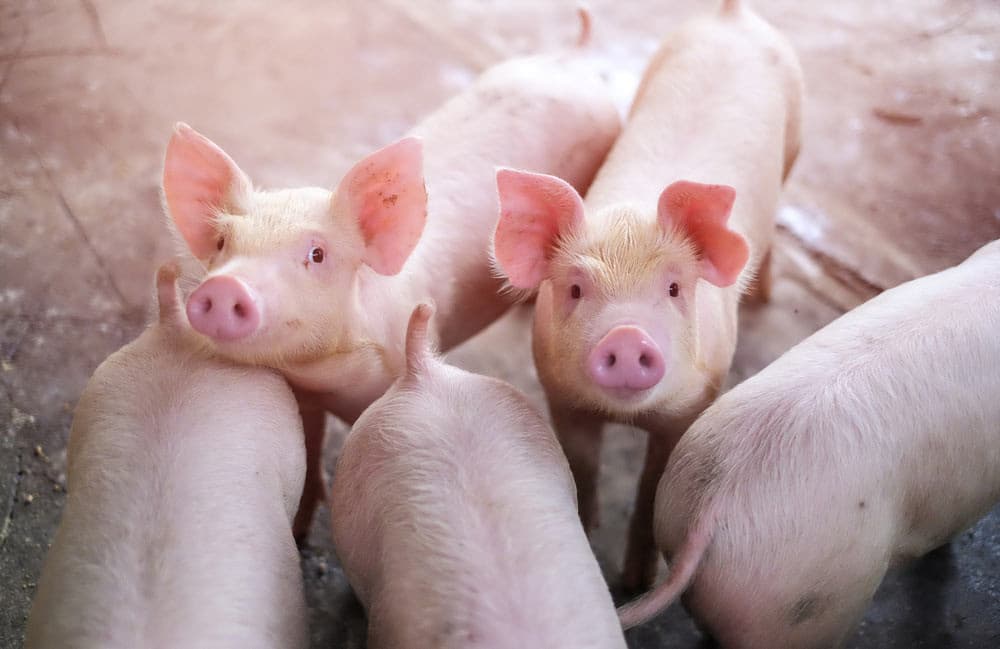
Long before science caught up with the facts, a 19th century author who wrote extensively on health issues had this to say about eating pork:
Pork, although one of the most common articles of diet, is one of the most injurious. God did not prohibit the Hebrews from eating swine’s flesh merely to show His authority, but because it was not a proper article of food for man. It would fill the system with scrofula (tuberculosis in lymph nodes), and especially in that warm climate produced leprosy, and disease of various kinds. Its influence upon the system in that climate was far more injurious than in a colder climate. But God never designed the swine to be eaten under any circumstances. . . .
But it is not the physical health alone which is injured by pork eating. The mind is affected, and the finer sensibilities are blunted by the use of this gross article of food. It is impossible for the flesh of any living creatures to be healthy when filth is their natural element, and when they will feed upon every detestable thing. The flesh of swine is composed of what they eat. If human beings eat their flesh, their blood and their flesh will be corrupted by impurities conveyed to them through the swine. (CD 392.3-393.1).
Science has certainly confirmed these statements. So, can Christians eat pork? Or is it a sin to eat pork? Perhaps a better question is, Should Christians eat what is “unfit for human consumption,” especially if “God never designed the swine to be eaten under any circumstances”? Remember that your body is the temple of the Holy Spirit (1 Corinthians 6:19) and that whatever you eat or drink should be to the glory of God (1 Corinthians 10:31). Putting health-destroying, blood-polluting “foods” into our bodies is not to the glory of God. This applies to pork and pork by-products and many other “food” items commonly accepted, but that nonetheless lead to disease. Considering that by God’s grace, our bodies are the dwelling place for the Holy Spirit, shouldn’t we do all we can to protect the health of our body temple? Shouldn’t Christians have the highest standard when it comes to eating and drinking?
Consider the following scientific evidence that pork is bad for you.
Disease Transmission from Pigs to Humans
Numerous diseases in humans may be linked to eating pork or pork by-products.
Trichinosis
Trichinosis is “one of the most widespread global parasitic diseases of humans and animals,”1 according to William Foreyt, a researcher in veterinary parasitology. The disease is caused by a microscopic parasite that occurs in wild animals such as bears and walrus, and domesticated animals such as pigs and horses. Initial symptoms can be flu-like and include abdominal problems such as nausea or diarrhea, as well as headache, fever, and chills. Trichinosis can lead to muscular, heart, and breathing problems which can result in death. Because the symptoms of trichinosis are common to many other diseases, it may be misdiagnosed.
Although regulations have worked to eliminate trichinosis, in recent years “numerous outbreaks around the world and recent epidemiological findings have demonstrated that trichinosis is, indeed, a re-emerging disease in both developed and developing countries.”2
Hepatitis E
According to Healthline, “In developed nations, pork liver is the top food-based transmitter of hepatitis E, a virus that infects 20 million people each year.”3 The disease can cause rapid onset liver failure in pregnant women and for others can result in complications such as myocarditis (inflammation of the heart), neurological problems, muscle damage, and painful joints.
In the US, about 10% of store-bought pig livers are infected with hepatitis E.4
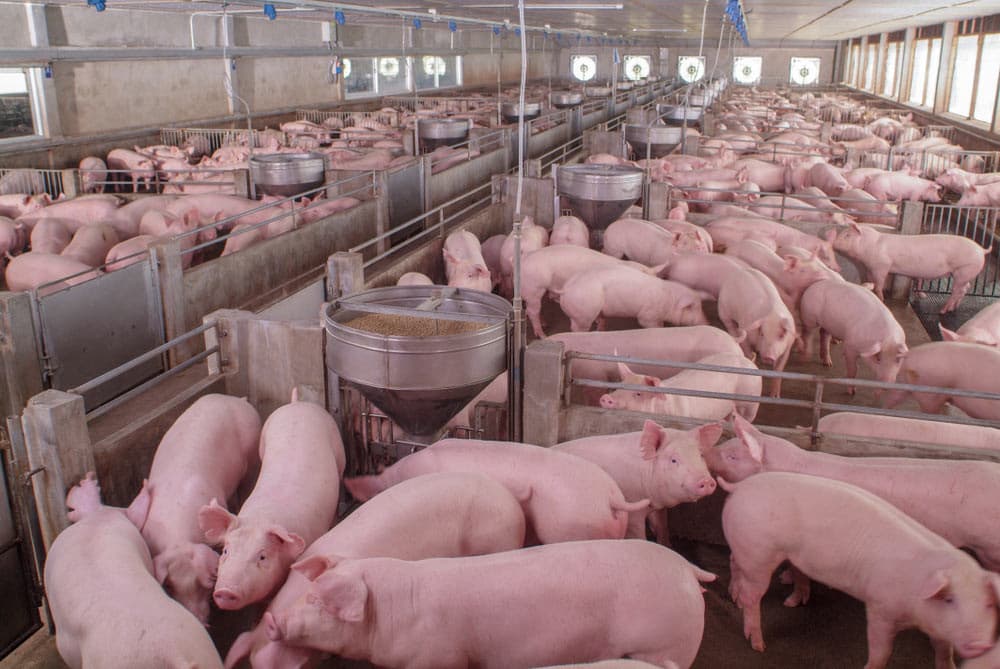
Multiple Sclerosis
Research has identified a “robust link”5 between pork consumption and multiple sclerosis, a debilitating autoimmune disorder that affects the central nervous system.
Liver Cancer and Cirrhosis
The World Health Organization has classified processed meats as a Group 1 carcinogen,6 an agent which has been shown to cause cancer. Pork products like bacon, hotdogs, and pork sausages are included in this category.
Bacteria
The bacterium Yersinia enterocolitica causes 640 hospitalizations and 35 deaths each year in the United States, according to the Centers for Disease Control and Prevention. A study found that 69% of pork samples from six US cities contained yersinia, and most were antibiotic-resistant.7
Tuberculosis
Tuberculosis can be spread to humans from infected animals. It is more prevalent in developing countries but it is considered to be “of great public health concern”8 in the US and other developed countries because its prevalence is increasing among immunocompromised people and it is resistant to treatment. It is considered to be a threat even to pigs raised in confinement due to its transmissibility and multiple routes of exposure.
Prions
Prions are infectious substances made of protein. They carry fatal diseases such as mad cow disease and Creutzfeldt-Jakob disease (CJD), the variant of the disease in humans. In spite of its name, bovine spongiform encephalopathy, BSE or mad cow disease, is not restricted to cattle. Forms of this progressive and fatal brain disease occur in many different mammal species including sheep,9 cats, pigs10 and humans. And an infectious animal may not even display symptoms but is still able to pass on the prions to other animals. Transmutated prions in asymptomatic mice were shown to be able to infect and kill other mice and hamsters.11 Prions easily cross from one species to another.

So, while Creutzfeldt-Jakob disease is thought to be connected to the consumption of infected cattle, variants of the disease can be transmitted to humans from other animals. And it only takes one prion to start trouble. Scientists have observed that a prion placed next to a normal protein will change the normal protein to a prion.
The mad cow disease prion is found most commonly in the central nervous system and bones of animals. One study stated, “Research into clinical BSE cases has reported that 84.3% of the BSE infectivity is associated with bovine CNS (central nervous system) tissue.”12 Nerve tissue reaches all parts of the body, including the skin. As well, there is no safety in being selective about the parts of an animal that you eat because the butchering process slices the bone and smears its contents across the face of the cut produced.
Drugs
In a US investigation, Consumer Reports found that 20% of pork products purchased at consumer retail outlets contained low levels of ractopamine, a drug added to animal feed. Some countries have banned the drug and some US packers will not process pigs treated with the drug. “Ractopamine is associated with major health problems in food-producing animals, such as ‘downer’ syndrome (the animal cannot rise to its feet) and severe cardiovascular stress, and has also been linked to heart problems and even poisoning in humans,” according to a Food Safety Fact Sheet.13
Along with many other nations, the European Union has banned ractopamine and refuses to set maximum residue limits due to “outstanding safety concerns.”14
A wide range of drugs and chemicals are used in animal production and consumers are usually not aware of them or their effects on human health. Research has shown that drug residues persist15 even through processing and cooking. When we consume drug and chemical residues, they accumulate in our tissues with detrimental effects on our health.
But choosing to avoid pork can be surprisingly difficult because of the widespread use of pork derivatives in the food industry. While it’s easy to avoid pork chops, ham, and bacon, few of us realize how clever the food industry is in adding pork to our diets in the form of gelatin, fat derivatives, glycerine, amino acids, and other pork by-products.
Gelatin in Foods
Where does it come from?
Gelatin is manufactured from collagen derived from animal carcasses.16 Collagen is the protein that skin, bones, and body tissues are made of. When it’s heated, this protein breaks down into gelatin. PB Leiner, a collagen and gelatin manufacturer states on their website that they use the “skin and bones of beef, pig, and fish” to make gelatin and collagen. The Gelatine Manufacturers of Europe website says that “eighty percent of the edible gelatine used in Europe is made from pork skins.” The rest comes from cattle and fish.

The American Food and Drug Administration raised concerns about the safety of gelatin as a food product in light of the spread of mad cow disease.17 Gelatin is manufactured at temperatures lower than 200°F, but it takes a temperature of 800°F to destroy the prion that causes mad cow disease. This makes gelatin a potential carrier of dangerous prions. And gelatin is used widely in the food industry as an ingredient and a hidden processing agent.
What foods contain gelatin?
Gelatin is used in a variety of ways to make edible products. It is used in the pharmaceutical industry to make capsules and pill coatings, in bakery products, in food and confectionery items. It is also important in the trendy health and nutrition industry where it is marketed as an all-natural protein ingredient for enhancing sports performance, improving bone and joint health, and in helping defy the effects of aging by increasing skin elasticity and appearance. Gelatin has technical applications as a coating and is also used in pet foods, agricultural feed, and fertilizers.
Major food uses for gelatin include gelled foods, bakery products, meat products, fish products, confectionery items, ice cream, alcoholic and soft drinks, dairy products, and yellow fats and spreads. For example, gelatin is used in low-fat butter to improve texture and mouth feel. Gelatin is a texture enhancer and also extends the shelf life of many food products.

Although reading ingredients lists on food packaging can help you spot gelatin in most products, since gelatin is used as a processing agent in some foods, declaring it as an ingredient is not always required. For instance, gelatin is used as a clarifying agent in almond milk and juices18 and manufacturers are not required to declare it.19 So, generally speaking, gelatin may be an ingredient or processing agent in any processed food product on the market today, even if you don’t see it on the ingredients label.
Products Containing Gelatin
Here are some of the foods that contain gelatin:
Confectionery products such as jubes, wine gums, and pastilles; aerated confections such as marshmallows, nougat, marshmallow-meringues, and biscuit and wafer fillings; sugar-pulled confectionery such as fruit chews, milk caramels, toffees, cream pastes, and licorice; compressed tablets; and lozenges. This includes frostings, icings, and bakery glazes as well.
Dairy products such as yogurt, sour cream, cream cheese, cottage cheese, cheese spreads, pudding, molded creams and custards, mousse, chiffons and soufflés, ice cream, water ices, milk ices and novelties, thickened cream, and margarine.

Gelatin Desserts such as Jell-O.
Meat Products such as cooked ham, canned meat products, aspics, sausage, decorative jellies, and glazes for meats.
Gelatin also has other food applications such as gelling of canned seafood products; micro-encapsulation of flavors, colors, and vitamins; stabilizing of cream fillings for frozen baked products; protein enrichment of foods such as beverages and dietetic products; film forming in panned chewing gum varieties; coating of fruits, meats and delicatessen items; thickening and emulsifying soups, sauces, and gravies; and thickening and stabilizing low fat mayonnaise and salad dressing.
Other Pig By-products in Foods
In a book titled Pig 05049, Christien Meindertsma documented 185 different products that were made from a single pig. Pig by-products are used to pearlize and harden soap, are found in shampoo, conditioner, hand lotion, and toothpaste. Fibrin from pig blood is used to hold small bits of beef steak or tuna flakes together. L-cysteine, an amino acid derived from pig hair, is used as a dough conditioner. Glycerine from pig fat is used in hand lotions and as a food preservative. For example, it is used to keep dried fruit like cranberries20 and mangoes21 soft.
Mono- and diglycerides
Mono- and diglycerides are used as emulsifiers to help water and oil ingredients mix and are commonly used in ice cream, mayonnaise, salad dressings, and bakery products. They are fatty acids split off from triglycerides which occur naturally in fats and oils, either from plant or animal sources, including pigs. To form mono- and diglycerides, triglycerides are processed with glycerin, which could be from pig fat, and heat.
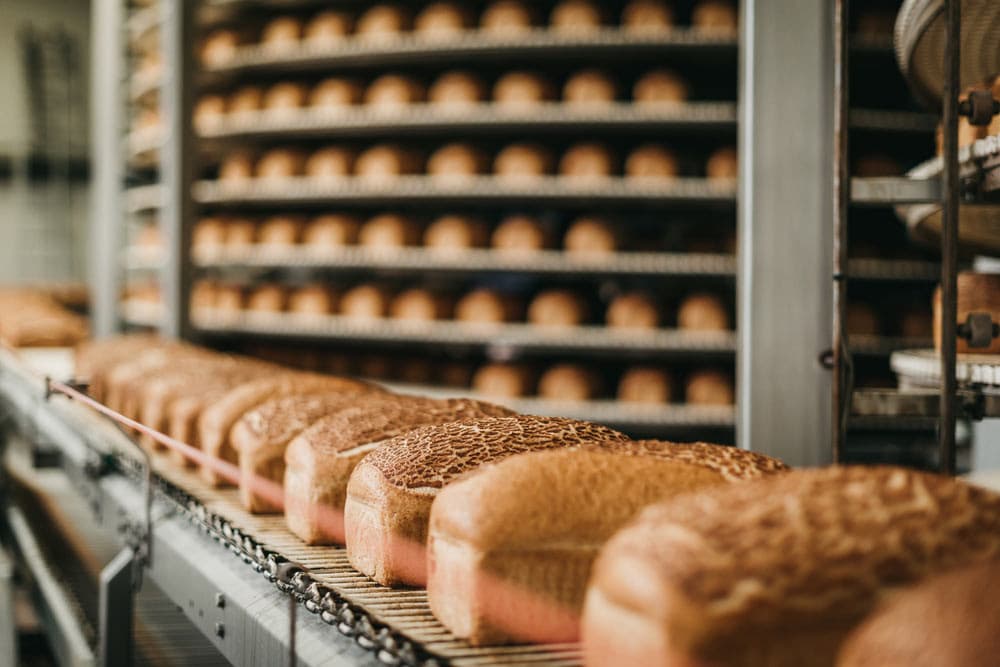
Mono- and diglycerides, also labeled as monoglycerides, monoacylglycerols, or glycerolipids, are common ingredients in baked goods because they help dough to rise higher and increase both the volume and softness. They also increase shelf life of bakery products. Unless the label says “vegetable mono- and diglycerides,” you cannot be sure they are plant-sourced and could be from pig fat.
Surprising examples of foods with hidden pork
Here are some examples of products that contain pork ingredients: Haribo Goldbears Gummi candies, Starbucks Marshmallow Dream Bar (gelatin), Pop-Tarts® (gelatin), McDonald’s Hot Caramel Sundae (mono and diglycerides), Dunkin’(R) Donuts’ Double Chocolate Donut (l-cysteine), Trident Sugar Free Gum (glycerine).
The Bottom Line
It’s clear that swine are still unclean animals and that pork by-products are in widespread use in many different forms. If you want to avoid pork in your food, don’t eat commercially manufactured foods. As much as possible, prepare dishes from scratch starting with whole foods. Make them from whole grains you cook yourself, legumes you prepare yourself, fresh and frozen vegetables, fresh fruits, and raw nuts and seeds you roast yourself. Obtain your sweeteners from dates, raisins, honey, apples, and jams, jellies, and apple “butters” made from 100% fruit without additives (pectin and citric acid are okay; they come from fruits). If you must add gravies or thickeners, make your own from flours, water or nut milks, olive oil, and herbs. Nut creams, nut milks, and tofu work well as replacements for milk and milk products in gravies and sauces. Many dishes can be prepared ahead of time and placed in the freezer for quick use.
If you feel it’s too hard to make your favorite dishes from scratch, try changing your menu plan. Train your palate to enjoy simple foods from natural sources, and your body will be healthier for it. Nutritionists today advocate eating a diet of whole grains, vegetables, fruits, and nuts.
Eliminate sugary desserts, commercially prepared cookies, and candy from your diet. Replace them with fresh fruit, but avoid eating fruits and vegetables in the same meal (See The Health Message, Vol.1 no.7). Eat healthy and stay healthy!
These statements have not been evaluated by the Food and Drug Administration or Health Canada. Our articles, videos and products are not intended to diagnose, treat, cure, or prevent any disease. If you are pregnant, nursing, taking medication, or have a medical condition, consult your physician before following any recommendations or using any product on our site. You assume sole responsibility for your personal health, and you must use your own discretion under doctor consultation to determine whether any product or recommendation on this site is suitable for your personal situation.

